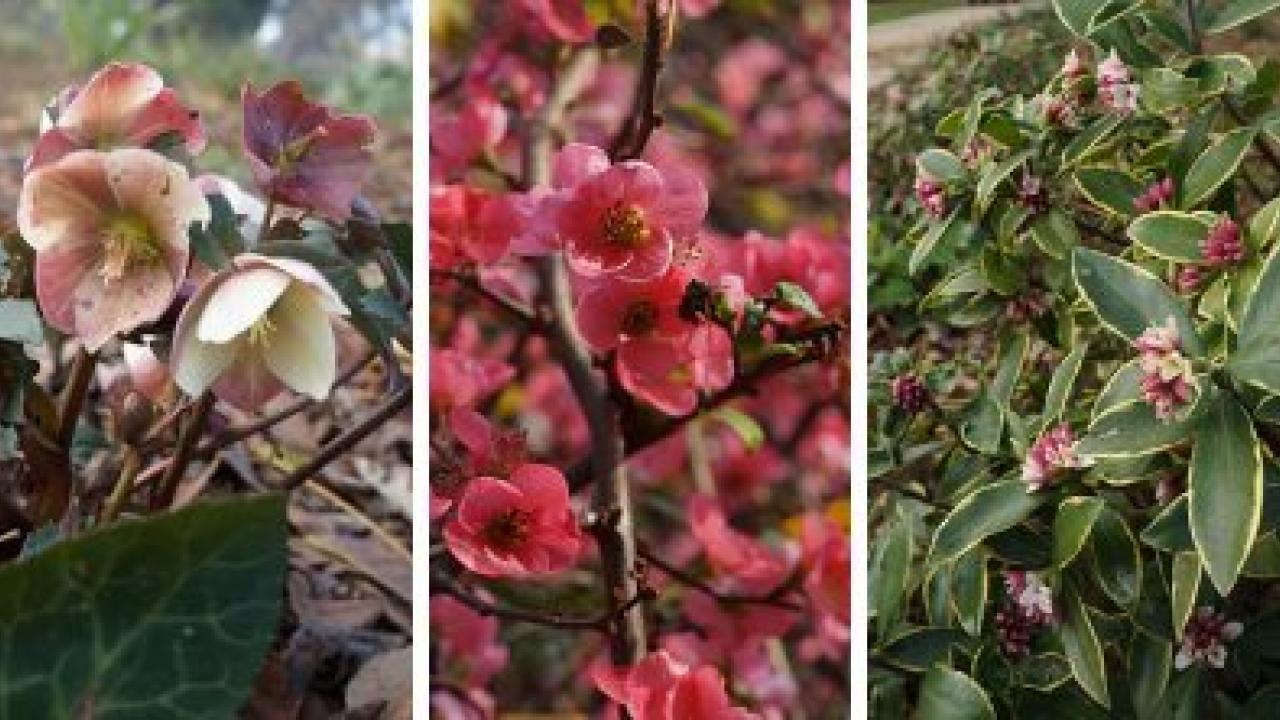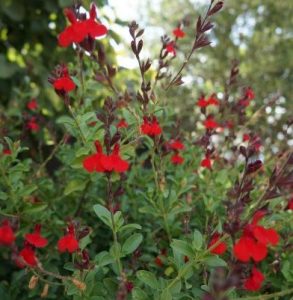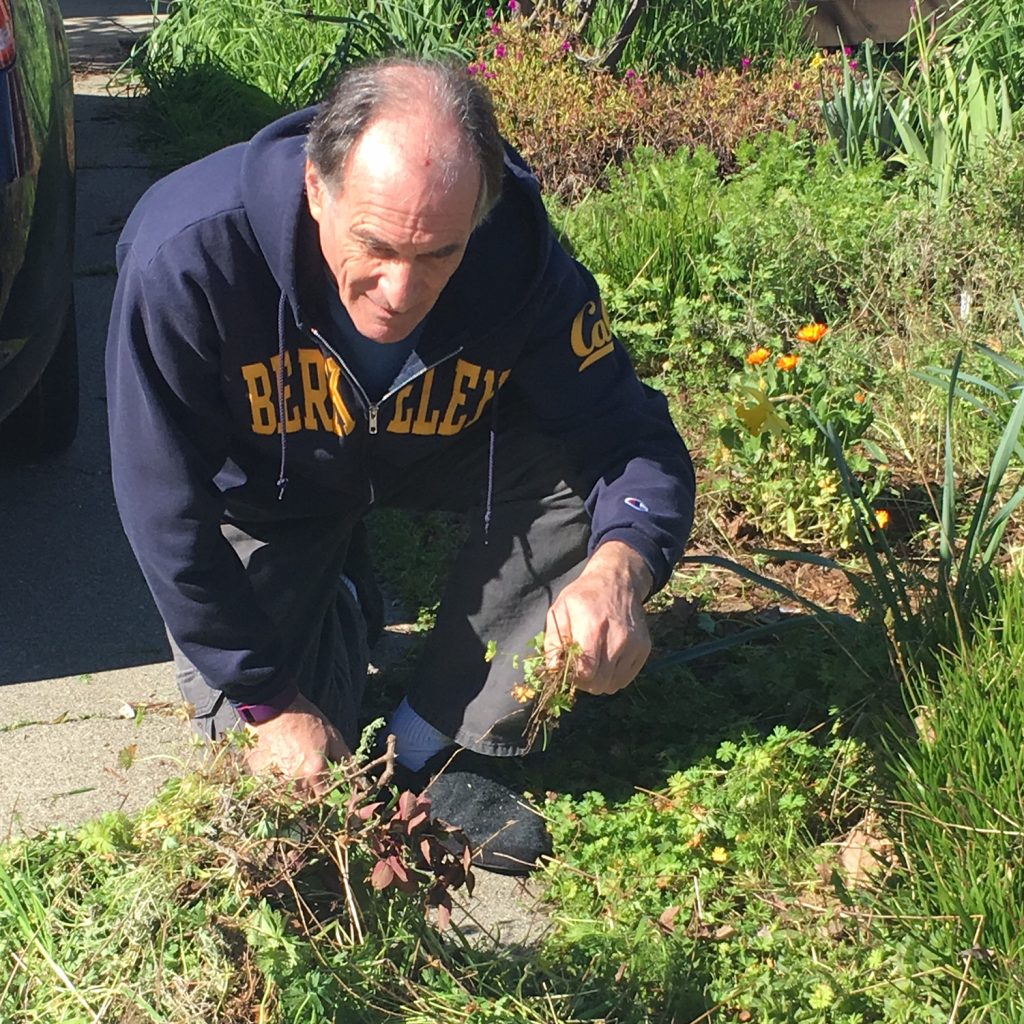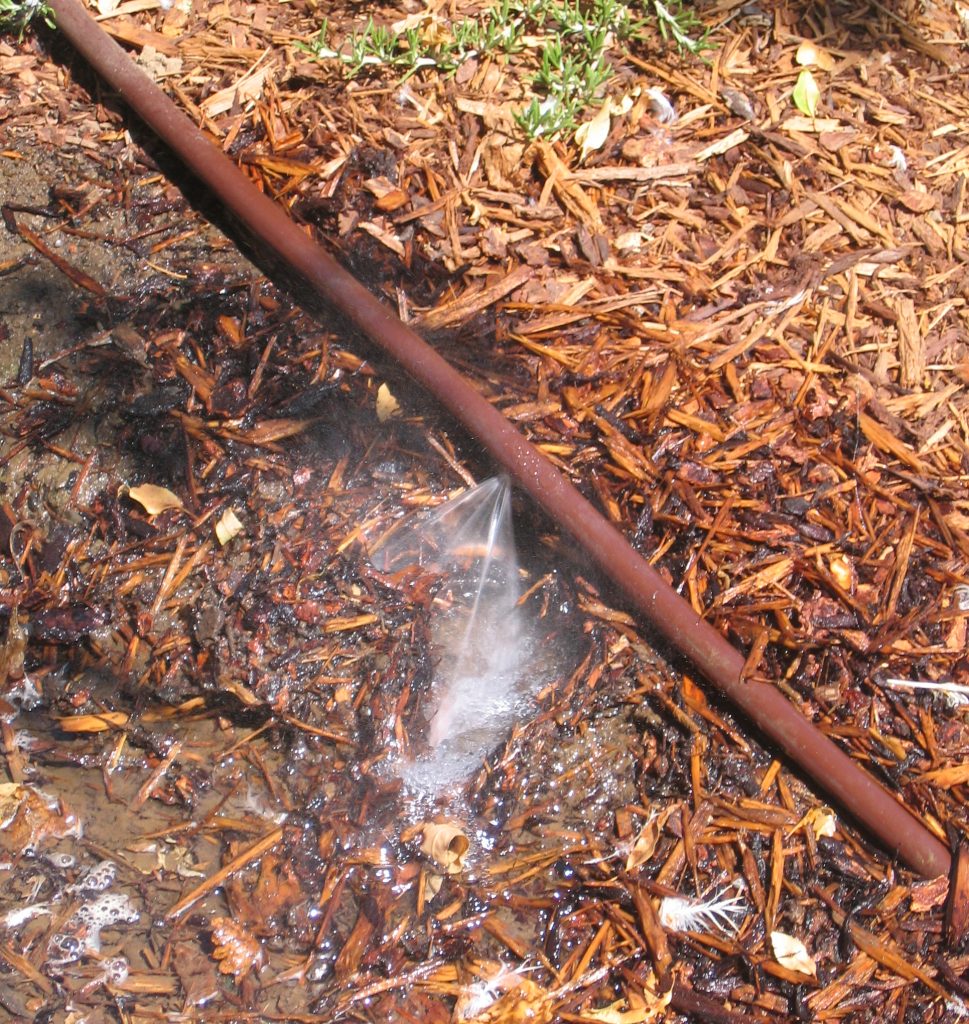
What to do in your garden this March
By Director of Public Horticulture Ellen Zagory
A break in the rain results in sunshine yet the air is still cool– the perfect conditions for getting outside into the garden to look around. If all that rain kept from getting to your February “do list” now is your chance. Pruning roses, cutting down perennial grasses and attacking weeds should be finished now. While outside enjoy the warm rays of sunshine and check how plants have fared our rainy winter.
Make flower arrangements
If you have planted Narcissus (daffodils) you can combine them with other early bloomers to bring spring inside. Hellebores (left), flowering quince (middle), and daphne (right) can be combined with ferns or other foliage for a lovely effect.
 Shape plants as they begin to grow
Shape plants as they begin to grow
Shape shrubby autumn sages (Salvia greggii and Salvia × jamensis) so they will grow bushy and full. Remove old dry flower stalks from perennials like yarrow if you haven’t done it already. March is usually fine to start cleaning up frost damage on tender plants like succulents, firecracker plant (Russellia), cape plumbago (Plumbago capensis) and lantana.
 Weed management
Weed management
If, like pretty much everyone, your weeds got out of control this year, desperation may call for drastic measures. Try hand weeding right around existing plants (especially asters and other herbaceous perennials that are just starting to push new growth) and if you can fit between the plants, use a small hand or string trimmer, or even a small mower to cut weeds down. This will stunt them and give you more time before they flower and set seed. Examine your mulch layer and see if it is getting thin. If needed, order more and thicken the layer to prevent loss of soil moisture and suppress weed growth during the dry season to come.
 Test your irrigation system
Test your irrigation system
Turn on your irrigation, check for and repair leaks, and adjust heads to avoid overspray– but leave water off for now; there is plenty stored in the soil as a result of all the rain.
Avoid soil compaction
If you are thinking of planting ornamentals or veggies wait until the soil dries some before digging. Working saturated soil will damage structure and compact it making it harder than working in slightly moist soil. Our silt and clay soil is sticky when wet. If you walk on the soil and it builds up on your shoes making you taller as you walk around — its too wet!
 Enjoy nature
Enjoy nature
Most important to do in March is to get out and enjoy the natural world in your own yard, in the UC Davis Arboretum, the Putah Creek Riparian Reserve and along the many amazing trails near to us in the Vaca mountains, along the American River or along the levees of the Yolo Basin wildlife area. When it begins to warm, flowers will be everywhere as if they were planted just for you to enjoy.
